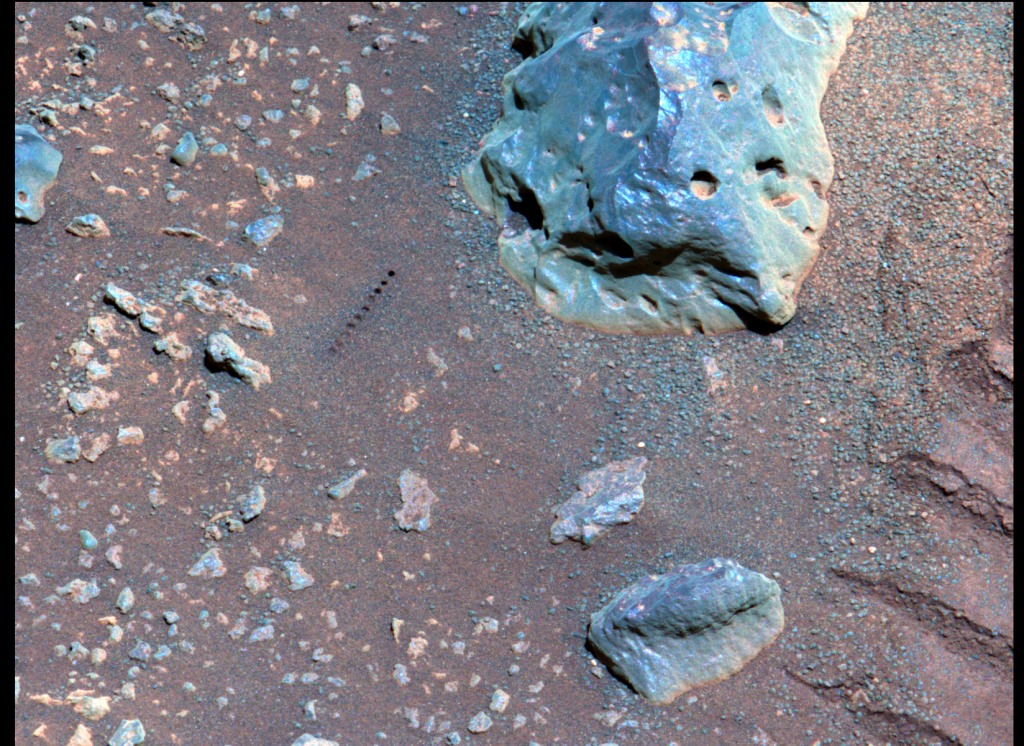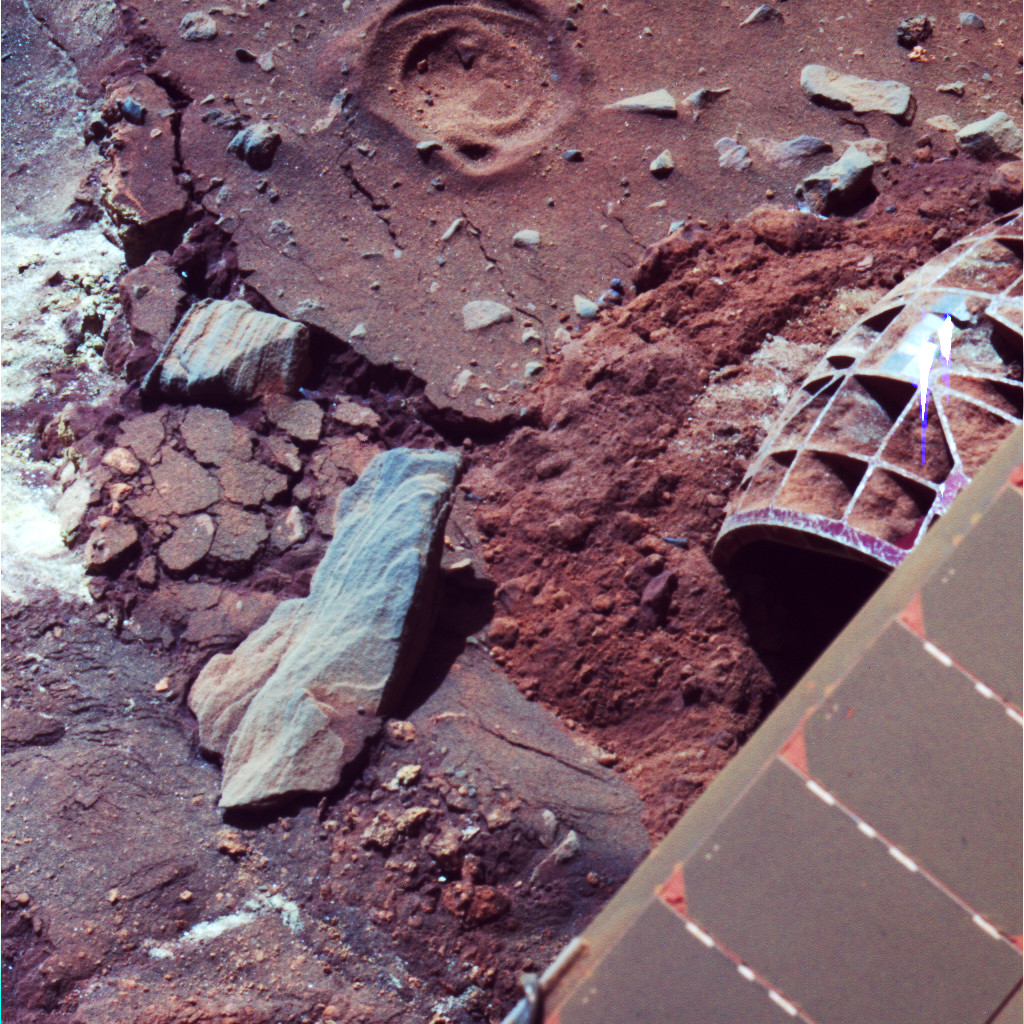
Whoosh!
Contributed by Jeff Johnson
This Mastcam-Z false-color image was acquired on Sol 123 using the 754 nm, 528 nm, and 442 nm filters of a soil target named Whoosh (“cactus” in the Navajo language). This image is one of those classic scenes showing the results of our team’s analyses of geologic targets amidst the varied rock and regolith materials over which the rover travels.
The series of ten ~20 mm wide holes in the soil in the center of this image was created by the laser-induced breakdown spectrometer (LIBS) portion of the SuperCam instrument. The last hole was made at the top of the set and was therefore not influenced by any subsequent holes. As such it is relatively pristine and demonstrates the slightly cohesive nature of the uppermost grains of soil in the regolith. Soils compressed by a rover wheel can be seen in the lower right of the image, where the spacing between the linear troughs is about 3 cm.
The main rock in the scene shows bright glints of sunlight off smooth surfaces (appearing as light-bluish colors). Bright, orange and pink-color patches are concentrated in low spots on the rock face, and represent areas of wind-deposited dust. Thin, darker-colored, curving lines are observed along the center of the rock. These may represent collections of fine-grains concentrated in layers within the rock, or possibly flow features from when the rock was deposited. Small purple-colored patches on this rock (and the rock at the bottom of the scene) are similar to those observed in many previous rocks and probably represent remnants of an iron-rich, oxidized coating that has partially weathered away.
The last Pancam image acquired by the Mars Exploration Rover Spirit, shown below, is similar in this regard – another of those classic scenes showing varied rock and regolith materials over which a rover has traveled.

June 25, 2021